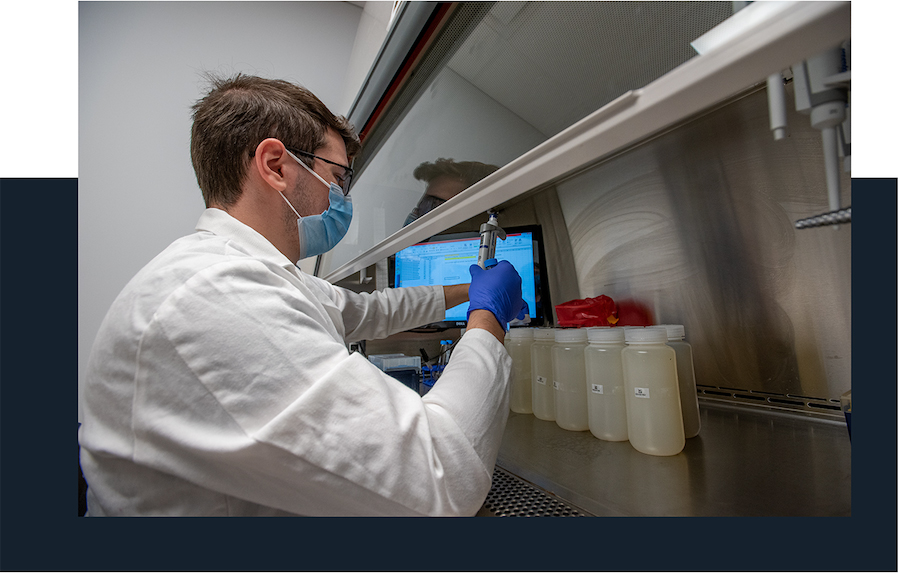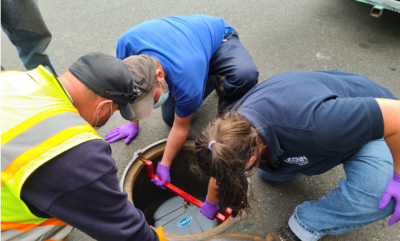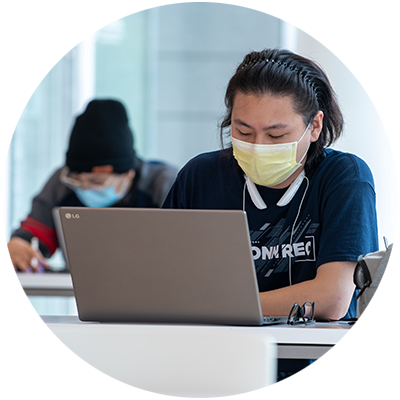
What is wastewater testing?
People infected with SARS-CoV2 shed the virus in their feces, often before the onset of symptoms, making wastewater a convenient sample source for monitoring a population in aggregate.
Testing Strategy
Testing wastewater samples from specific areas on campus monitors trends in COVID, including reported and unreported or unknown infections. Trends in viral concentrations in wastewater have already been shown to lead trends in new reported cases within a sewershed by days, enabling detection of rising cases in a particular area.

Test for viral load in feces

Capture actionable samples

Isolate sections of campus
Wastewater Testing
How does it work?


Sample Collecting
Lab Processing
FAQs for Students/Disclaimers
What is the purpose of wastewater testing?
Sampling wastewater for SARS-CoV-2 is used to detect the presence of covid-19. Targeted wastewater surveillance can predict spikes in covid levels within the community. We gain a better understanding of where COVID-19 levels are increasing, which is used to inform pooled sampling testing efforts. Wastewater testing enables the University to monitor and evaluate trends in infection within the community.
I am a student concerned about symptoms and COVID-19 on campus. Where do I go for more information?
What if I feel ill or I experience COVID-19 symptoms?
People with COVID-19 have had a wide range of symptoms reported – ranging from mild symptoms to severe illness. Symptoms may appear 2-14 days after exposure to the virus. People with these symptoms may have COVID-19:
- Fever or chills
- Cough
- Shortness of breath or difficulty breathing
- Fatigue
- Muscle or body aches
- Headache
- New loss of taste or smell
- Sore throat
- Congestion or runny nose
- Nausea or vomiting
- Diarrhea
This list does not include all possible symptoms. CDC will continue to update this list as we learn more about COVID-19.
